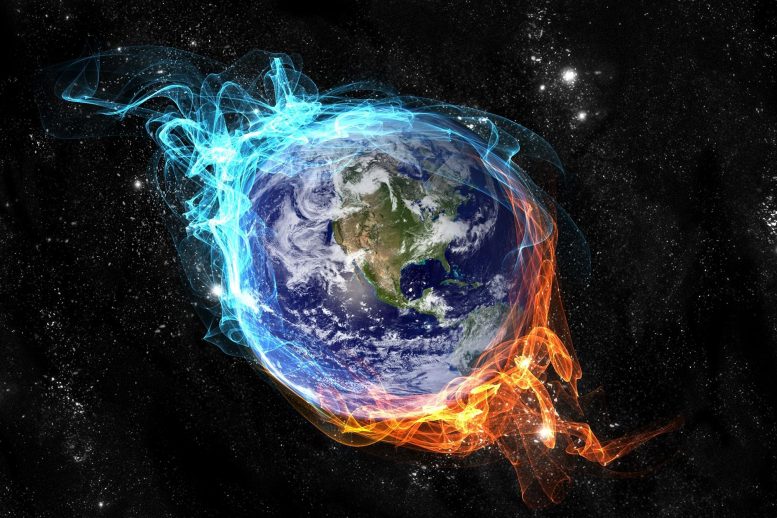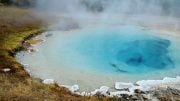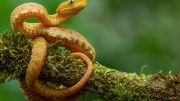
The researchers expect animals such as the Arctic fox, stoat, and common shrew to be more impacted by climate change.
A new study investigates which animals will best survive climate change.
As the average global temperature increases, extreme weather events like prolonged droughts and heavy downpours are becoming more frequent, and they will only become worse in the coming decades. What will happen to the planet’s ecosystems?
“That is the big question and the background for our study,” said biologist John Jackson. Jackson, along with his biologist colleagues Christie Le Coeur from the University of Oslo and Owen Jones from the University of Southern Denmark, recently published a new study in the journal eLife.
John Jackson currently attends Oxford University but was at the University of Southern Denmark at the time of the study. Owen Jones is an associate professor at the Department of Biology, University of Southern Denmark.
Llama, moose, and elephant
In the study, the scientists compared weather and climate data from the time the animal data were collected with data on population changes from 157 mammal species from across the globe. They collected 10 or more years of data for each species.
Their analysis has given them an insight into how populations of animal species have coped at times of extreme weather: Did their population increase or decrease? How did the quantity of their offspring shift?
“We can see a clear pattern: Animals that live a long time and have few offspring are less vulnerable when extreme weather hits than animals that live for a short time and have many offspring. Examples are llamas, long-lived bats and elephants versus mice, possums, and rare marsupials such as the woylie,” said Owen Jones.
Less affected by extreme weather
The study found that the African elephant, Siberian tiger, chimpanzee, greater horseshoe bat, llama, vicuña, white rhinoceros, grizzly bear, American bison, klipspringer, and Schreibers’s bat were less impacted by extreme weather.
More affected by extreme weather
The scientists discovered that the Azara’s grass mouse, olive grass mouse, elegant fat-tailed mouse opossum, Canadian lemming, Tundra vole, Arctic fox, stoat, common shrew, woylie, and arctic ground squirrel were more impacted by extreme weather.
Quick drop – but also quick boom
Large, long-lived animals are better able to cope with conditions like prolonged drought; their ability to survive, reproduce and raise their offspring is not affected to the same extent as small, short-lived animals. They can, for example, invest their energy into one offspring, or simply wait for better times when conditions become challenging.
On the other hand, small short-lived rodents have more extreme population changes in the short term. In the event of a prolonged drought, for example, large parts of their food base may disappear more rapidly: insects, flowers, and fruits, and they are left to starve because they have limited fat reserves.
The populations of these small mammals may also boom to take advantage when conditions improve because, in contrast to large mammals, they can produce many offspring.
Not the same as the risk of extinction
“These small mammals react quickly to extreme weather, and it goes both ways. Their vulnerability to extreme weather should therefore not be equated with a risk of extinction,” said John Jackson.
He also reminds us that the ability of an animal species to withstand climate change must not stand alone when assessing the species’ vulnerability to extinction:
“Habitat destruction, poaching, pollution, and invasive species are factors that threaten many animal species – in many cases even more than climate change,” he emphasized.
The animals we don’t know much about
The researchers’ study not only gives an insight into how these specific 157 mammal species react to climate changes here and now. The study can also contribute to a better general understanding of how the planet’s animals will respond to ongoing climate change.
“We expect climate change to bring more extreme weather in the future. Animals will need to cope with this extreme weather as they always have. So, our analysis helps predict how different animal species might respond to future climate change based on their general characteristics – even if we have limited data on their populations,” said Owen Jones.
An example is the woylie, a rare Australian marsupial. Biologists do not know very much about this species, but because it shares a similar lifestyle with mice – that is, it is small, lives for a short time, and reproduces quickly – it can be predicted that it will respond to extreme weather in a similar way to mice.
Entire ecosystems will change
“In the same way, there are lots of animal species that we don’t know very much about, but whose reaction we can now predict,” explained John Jackson.
In this way, the researchers expect that the ability of different animal species to adapt to climate change is related to their life strategy, and this can help us predict ecological changes:
As habitat suitability changes due to climate change, species may be forced to move to new areas as old areas become inhospitable. These shifts depend on species’ life strategies and can have big impacts on ecosystem function.
Reference: “Life history predicts global population responses to the weather in terrestrial mammals” by John Jackson, Christie Le Coeur and Owen Jones, 1 July 2022, eLife.
DOI: 10.7554/eLife.74161
The study was funded by the Independent Research Fund Denmark.









Be the first to comment on "Which Animals Will Best Survive Climate Change?"